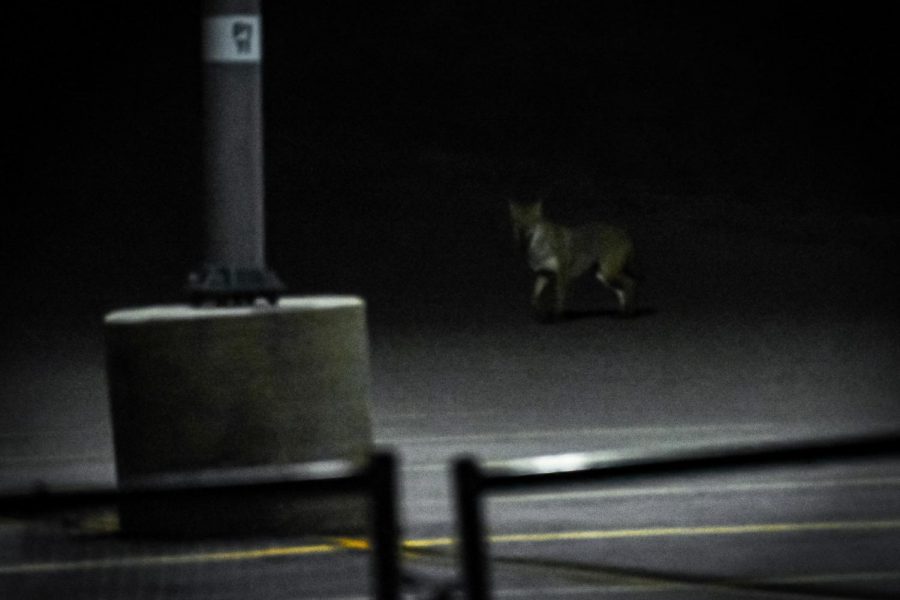Campus coyotes: What we know and what we don’t
A coyote is spotted on Oakland University’s campus.
Every night, many students of Oakland University vacate campus, leaving it empty and silent as they return to their homes. At this late hour, an entire ecosystem of nighttime critters comes alive in the biological preserves which cover 110 acres of campus.
For the most part, these animals stay hidden in the woods. A select few of them, however, spill over onto the main campus, lurking in the shadows as they search for scraps of food left lying around by students earlier in the day. One of the species that visits campus regularly is the coyote.
You might be a bit surprised that we have a coyote population at OU. If so, you’re probably wondering: Do these predators pose any threat to students? Luckily, according to Biology Professor Sandra Troxell-Smith, the danger posed by the coyotes is low, since “they are more scared of us than we are of them.”
That means it’s pretty unlikely that students will have a face-to-face encounter with a coyote. If a student gets close, the coyote will probably run away.
Despite this, it’s not impossible to have a run-in with a coyote, as they do make their way onto campus. Though much of their diet consists of small rodents found in the preserve, one thing keeps them coming back to the main campus.
“They don’t have to hunt,” Troxell-Smith said. “They can just go raid somebody’s trash can.”
If a coyote does enter campus, it is almost certain to do so late at night, which means students and coyotes are not typically in the same place at the same time. Nevertheless, it’s good to know what to do if you see one, in case you do find yourself walking around campus late at night.
The best way to handle an up-close coyote encounter is to try and deter it from attacking. You can do this by making loud noises, yelling and, if worst comes to worst, throwing things at the animal. The most important thing to know, however: don’t ever run from a coyote.
“That initiates its prey drive,” Troxell-Smith warns. “If it’s getting close to you, that’s when you want to use those deterring methods. Otherwise, just leave it alone.”
While it is certain that the coyotes live in the campus’s nature preserve, everything else about them remains a bit of a mystery, as the biology department has yet to initiate any studies about the population. Nobody is sure how many coyotes live in the preserve, and it is unclear how they got there in the first place.
The students of BIO 4350 have, however, set up camera traps in order to monitor the wildlife in the preserve, and coyotes have shown up on the cameras. Recently, students recovered a trail-cam from the nature preserve which had recorded a picture of two coyotes walking together through the woods.
There could, however, be many more living in the preserve. Though more research would be needed to confirm it, Troxell-Smith presumes that a healthy population exists, and they are a vital part of the campus ecosystem, as they are the only top predator in the area.
“The preserve does provide a really good habitat for them, with constant small animal food resources,” she said.
At the end of the day, the best thing students can do is be aware of the coyotes’ presence on campus. As long as students leave them be, the coyotes will continue to keep to the shadows.










